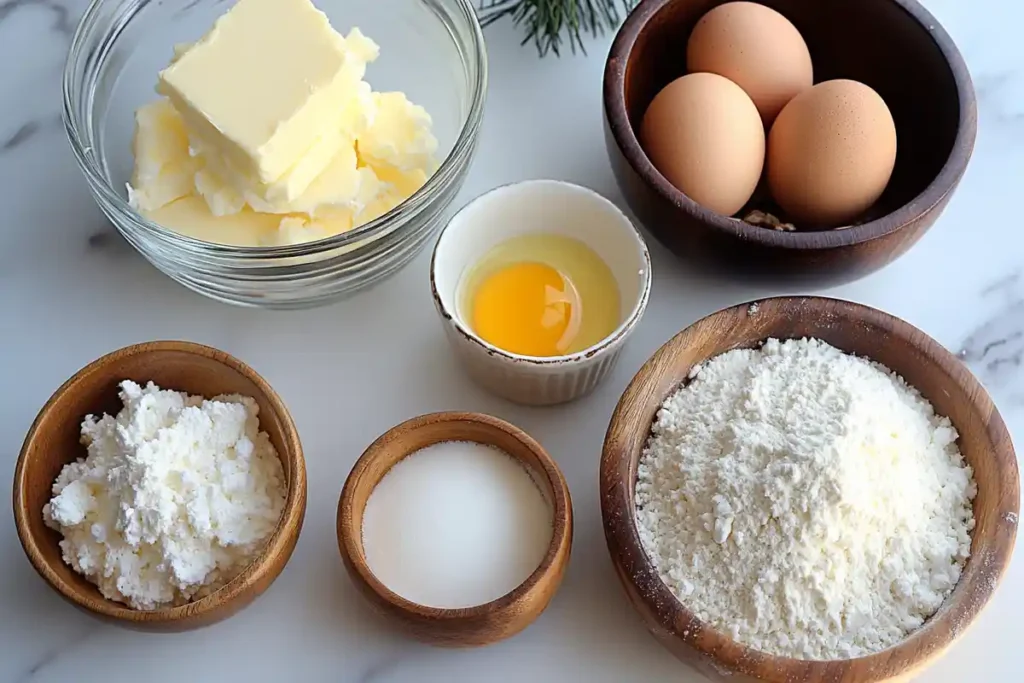Introduction to Sourdough Croissants
There’s something almost poetic about baking sourdough croissants. The slow fermentation process brings out a depth of flavor that mass-produced pastries can only dream of. You can smell the rich butter, feel the crisp edges, and taste the tangy notes in every bite. But let’s be honest—it’s not just about the croissant itself. It’s about the process, the patience, and the joy of creating something extraordinary from simple ingredients.
Table of Contents
A Personal Journey into Baking Sourdough Croissants
For many bakers, the journey starts with a question: What makes a sourdough croissant different from a regular one? And then, like falling down a delightful rabbit hole, they discover terms like lamination, proofing, and beverage. You’re not alone if you’ve ever felt intimidated by these technical terms. But here’s the thing—every great baker started somewhere.
When I first attempted sourdough croissants, I expected perfection. Spoiler alert: it wasn’t perfect. But each batch improved, and the satisfaction of pulling golden, flaky pastries out of the oven was worth every moment of doubt.
Why You Should Try This Recipe
You might be wondering, “Is it worth the effort?” Absolutely! Sourdough croissants aren’t just a culinary project but a testament to patience, precision, and love for baking. Plus, the reward isn’t just the final product; it’s the entire process.
In this guide, we’ll cover:
- The science behind sourdough croissants
- Step-by-step recipe instructions
- Tips for avoiding common mistakes
- Variations and serving ideas
So, whether you’re a home baker looking to elevate your skills or someone simply curious about natural fermentation, this recipe is for you. Trust me—it’s worth every fold, every proof, and every second in the oven.
Let’s begin!
What Are Sourdough Croissants?
The Unique Identity of Sourdough Croissants
Sourdough croissants stand apart from their yeasted counterparts, not just in flavor but in character. While regular croissants rely on commercial yeast for a quick rise, sourdough croissants depend on a natural fermentation process driven by an active sourdough starter. This slow fermentation allows a more complex flavor profile, blending buttery richness with a subtle tang.
The texture? Oh, it’s an experience in itself! The delicate, laminated layers create a crisp exterior that shatters with every bite while the interior remains soft, airy, and slightly chewy. In many ways, these pastries are a marriage of art and science—where precision meets creativity.
How Sourdough Croissants Differ from Regular Croissants
At first glance, sourdough and regular croissants might look the same—golden, flaky, and irresistibly layered. But the magic lies in the details:
- Fermentation Process: Regular croissants use commercial yeast for a faster rise, while sourdough croissants rely on wild yeast and lactobacilli for fermentation.
- Flavor Profile: Sourdough croissants have a tangy undertone thanks to the natural fermentation.
- Digestibility: The slow fermentation in sourdough breaks down gluten, making these croissants easier on the stomach.
Health Benefits of Sourdough Croissants
Easier Digestion Through Natural Fermentation
One of the standout benefits of sourdough croissants is their digestibility. Thanks to the slow fermentation process, much of the gluten in the dough is broken down. For individuals with mild gluten sensitivities, this can make sourdough croissants a gentler choice compared to regular pastries.
The lactic acid bacteria in the sourdough starter also produce enzymes that help pre-digest starches, making the croissants easier on the stomach. It’s like having a tiny team of culinary chemists working inside your dough!
Improved Nutrient Absorption
Here’s a fun fact: the slow fermentation process in sourdough enhances the availability of nutrients in the flour. Phytic acid, a compound naturally present in grains, can block the absorption of minerals like iron, zinc, and calcium. But these acids are broken down during fermentation, allowing your body to absorb more nutrients.
In simpler terms? You’re not just eating a pastry—you’re eating a nutrient-rich delight!
Lower Glycemic Index
Because of the fermentation process, sourdough croissants typically have a lower glycemic index than their yeasted counterparts. It means they cause a slower, more gradual rise in blood sugar levels, making them a more suitable option for individuals watching their sugar intake.
Key Ingredients for Sourdough Croissants
The Foundation of a Perfect Sourdough Croissant

Creating sourdough croissants isn’t just about technique—it’s about using the right ingredients in proportions. Each component ensures those flaky layers, golden crust, and tangy flavor come together perfectly.
Let’s break down the essential ingredients you’ll need and why they matter.
Sourdough Starter: The Heart of the Recipe
An active and well-fed sourdough starter is the cornerstone of any croissant recipe. This living culture of wild yeast and lactic acid bacteria leavens the dough and creates its signature tangy flavor.
- Pro Tip: Ensure your starter is bubbly, active, and fed at least 4-6 hours before mixing your dough. A sluggish starter will result in flat, dense croissants.
Flour: Structure and Elasticity
Flour provides the backbone of the dough. For sourdough croissants, you’ll want to use:
- All-purpose flour: A versatile choice offering the right protein content and structure balance.
- Bread flour: If you prefer a chewier texture and stronger gluten network.
The protein content in flour directly impacts how well the dough holds up during lamination and proofing. Too little protein and your layers will collapse. Too much, and your croissants may become overly chewy.
Butter: The Soul of Lamination
Ah, butter—the golden secret behind every perfectly laminated croissant. European-style butter, with its higher fat content (around 82-85%), is the best choice. Its rich flavor and lower water content make it ideal for creating those distinct, flaky layers.
- Pro Tip: When incorporated into the dough, your butter must be cold but pliable. Too warm, and it’ll melt. Too cold, and it’ll crack.
Milk: For Richness and Flavor
Milk softens the dough and adds a subtle richness. Whole milk is generally preferred for its fat content, but you can experiment with alternatives like almond or oat milk for a twist.
Sugar: A Touch of Sweetness
Sugar sweetens the dough and contributes to the golden-brown crust during baking. It helps caramelize the outer layers, enhancing both texture and taste.
Eggs: Gloss and Structure
Eggs are primarily used for the egg wash, giving croissants their beautiful, glossy finish. Don’t skip this step—it’s the difference between a dull pastry and one that shines!
Salt: Enhancing Flavor
Salt might seem like a minor ingredient, but it’s vital. It balances the sweetness, enhances flavors, and tightens the gluten structure, improving dough elasticity.
Water: Bringing It All Together
Water hydrates the flour and activates the gluten network. Ensure it’s at room temperature—neither hot nor cold—to avoid shocking your sourdough starter.
Optional Add-ins: Personalize Your Croissants
- Chocolate batons for pain au chocolat.
- Almond paste for almond croissants.
- Savory fillings like ham and cheese for a hearty treat.
When it comes to sourdough croissants, every ingredient matters. Choose wisely, measure carefully, and remember—patience is just as important as precision.
Step-by-Step Recipe Guide
Mastering the Art of Sourdough Croissants, One Step at a Time
Ah, here we are—the heart of the sourdough croissant recipe! While the process may span a few days, every step serves a purpose. So, take a deep breath, trust the process, and let’s create flaky perfection together.
Day 1: Prepare the Dough (Détrempe)
The first day is all about building the foundation.
- Ingredients for the Dough:
- 500g all-purpose flour
- 100g active sourdough starter
- 50g sugar
- 10g salt
- 250ml whole milk (room temperature)
- 50g unsalted butter (softened)
- Mixing the Dough: Combine all ingredients in a large mixing bowl. Mix until you achieve a rough dough.
- Kneading: Knead the dough gently for about 8–10 minutes until it’s smooth and elastic.
- First Fermentation: Place the dough in a lightly oiled bowl, cover with plastic wrap, and let it ferment at room temperature for 4–6 hours.
- Chilling: Transfer the dough to the fridge overnight to develop flavor and firm up for lamination after fermentation.
Pro Tip: Don’t rush the chilling step—it’s essential for achieving clean, defined layers later.
Day 2: Laminate the Dough (Beurrage)
Today’s focus is on creating those flaky layers.
- Butter Block Ingredients:
- 250g European-style butter (82% fat content)
- Prepare the Butter Block: Place the butter between two sheets of parchment paper and pound it gently with a rolling pin to form a rectangle approximately 7×9 inches. Chill for 30 minutes.
- Roll Out the Dough: Roll your chilled dough into a rectangle twice the size of your butter block.
- Encasing the Butter: Place the butter in the center and fold the dough over it, sealing the edges tightly.
- First Fold: Roll the dough into a long rectangle, fold it into thirds like a letter, and chill for 30 minutes.
- Second and Third Folds: Repeat the rolling and folding process twice, chilling the dough between each fold.
Pro Tip: Maintain consistency in butter and dough temperature. Too warm, and the butter will leak. Too cold, and it’ll crack.
Day 3: Shape and Proof the Croissants
Today, we bring the croissants to life!

- Roll Out the Dough: Roll the chilled dough into a large rectangle about 1/4 inch thick.
- Cutting Triangles: Cut the dough into long triangles using a sharp knife or pizza cutter. Each triangle should be about 4 inches wide at the base.
- Shaping the Croissants: Starting at the base, roll each triangle tightly toward the tip. Make sure the tip is tucked underneath.
- Final Proofing: Place the shaped croissants on a baking tray lined with parchment paper. Let them proof at room temperature for 2–3 hours until they are puffy and jiggly.
Pro Tip: The ideal proofing temperature is around 24–26°C (75–79°F). Too cold, the dough won’t rise properly; too warm, and the butter will melt.
Day 4: Bake to Golden Perfection
It’s time for the grand finale!

- Preheat the Oven: Preheat to 190°C (375°F).
- Egg Wash: Brush each croissant with a mixture of one beaten egg and a tablespoon of milk.
- Bake: Bake for 20–25 minutes or until golden brown and crispy.
- Cooling: Allow the croissants to cool on a wire rack for at least 15 minutes.
Pro Tip: Don’t rush into eating them immediately (I know it isn’t very easy). The layers need a moment to settle for the best texture.
Congratulations! You’ve just created a batch of sourdough croissants that rival any French bakery.
Common Mistakes and Troubleshooting
Avoiding Sourdough Croissant Pitfalls
While baking sourdough croissants is deeply rewarding, it’s also easy to stumble. Let’s tackle some common mistakes so you can bake with confidence.

- Over proofing or Underproofing the Dough
- Problem: The croissants collapse in the oven or have uneven layers.
- Solution: Pay close attention during the final proof. Properly proofed croissants should jiggle slightly when nudged.
- Butter Leakage During Baking
- Problem: Butter pools out during baking, leaving croissants greasy.
- Solution: Ensure the butter block is evenly distributed during lamination and keep the dough consistently chilled.
- Uneven Layers or Tough Texture
- Problem: The layers aren’t well-defined, or the croissant feels dense.
- Solution: Be gentle during lamination. Avoid pressing too hard when rolling out the dough.
- Inconsistent Dough Temperature
- Problem: The butter melts into the dough or cracks during folding.
- Solution: Keep the dough and butter at similar temperatures—cold but pliable.
- Ignoring the Sourdough Starter’s Health
- Problem: The croissants don’t rise properly.
- Solution: Ensure your starter is bubbly, active, and adequately fed before starting.
Quick Troubleshooting Chart:
| Problem | Cause | Solution |
| Warm dough | Keep dough | chilled during lamination |
| Flat croissants | Weak starter | Use an active, well-fed starter |
| Uneven layers | Inconsistent folds | Follow the folding process carefully |
Baking Is a Journey, Not a Destination
Mistakes happen—it’s all part of the learning process. The good news? Every batch gets better, every fold gets cleaner, and every croissant becomes more flawless.
Delicious Variations of Sourdough Croissants
Unleashing Creativity with Sourdough Croissants
Once you’ve mastered the classic sourdough croissant, it’s time to let your imagination run wild. Croissants are a versatile canvas for both sweet and savory flavors. Whether you crave something indulgent, nutty, or cheesy, these variations will take your baking game to the next level.
Chocolate Sourdough Croissants (Pain au Chocolat)
Imagine biting into a flaky sourdough croissant only to discover a rich, melted chocolate center. Absolute bliss!

- How to Make Them: Before rolling your croissants, place two thin chocolate batons near the base of each triangle. Roll tightly, ensuring the chocolate stays encased.
- Baking Tip: Use high-quality dark chocolate for the best results—it beautifully balances the pastry’s buttery richness.
Almond Sourdough Croissants
Almond croissants are a favorite in French patisseries; now, you can make them at home.
- How to Make Them: After the croissants are baked and slightly cooled, slice them in half and fill them with almond cream (a mixture of almond flour, sugar, butter, and egg). Spread more almond cream on top and sprinkle with slivered almonds.
- Baking Tip: Mix them in the oven for 5–10 minutes to toast the almonds and caramelize the cream.
Savory Sourdough Croissants
Who said croissants have to be sweet? Savory sourdough croissants are perfect for brunch or a light lunch.

- Fillings to Try:
- Ham and cheese
- Spinach and feta
- Pesto and sun-dried tomatoes
- How to Make Them: Add your savory fillings before rolling the dough. Seal tightly to prevent leakage during baking.
- Serving Tip: Pair savory croissants with a fresh salad or a bowl of creamy soup.
Seasonal and Festive Twists
Get creative with seasonal ingredients! Here are some ideas:
- Pumpkin Spice Croissants: Add a hint of pumpkin puree and cinnamon to your dough.
- Berry Jam Croissants: Spread raspberry or strawberry jam before rolling.
- Gingerbread Croissants: Infuse the dough with ginger, cinnamon, and nutmeg for a holiday vibe.
Mini Sourdough Croissants
For parties or bite-sized indulgences, mini croissants are adorable and delicious.
- How to Make Them: Roll the dough into smaller triangles and reduce baking by 5–8 minutes.
- Serving Tip: Serve them on a platter with dipping sauces like chocolate ganache or raspberry coulis.
Customizing to Your Taste
The beauty of sourdough croissants lies in their versatility. The options are endless, whether you want them dripping with chocolate, stuffed with savory goodness, or sprinkled with festive spices.
Let your taste buds guide you, and don’t be afraid to experiment. After all, baking is both science and art!
Frequently Asked Questions (FAQs)
Your Sourdough Croissant Questions Answered
Baking sourdough croissants can feel like navigating uncharted territory, but don’t worry—we have answers to some of the most common questions.
Are sourdough croissants healthier?
Absolutely! Thanks to the natural fermentation process, sourdough croissants are easier to digest. The wild yeast and bacteria break down gluten and phytic acid, improving nutrient absorption. While they’re still a buttery indulgence, they’re a more intelligent choice than commercially yeasted croissants.
What not to do with sourdough?
Avoid these common mistakes:
Using an inactive starter—won’t provide the lift needed for croissants.
Skipping the proofing process.
Rushing through lamination—cold dough and butter are crucial.
Overworking the dough can ruin the flaky texture.
How many calories are in a sourdough croissant?
On average, a sourdough croissant contains around 280–350 calories, depending on the size and butter content. Variations with fillings like chocolate or almond cream may have slightly higher calorie counts.

